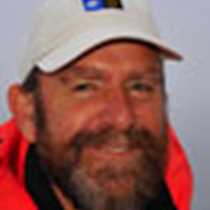SW Svalbard, Hornsund
77 degrees North! It has taken most of us two to three days just to reach the remote archipelago of Svalbard, high up in the Norwegian sector of the Arctic. Our rendezvous was Oslo, a teeming seaside capital bristling with castles, bistros, seafront cafes and ships masts, cultural home of explorers like Fridtjof Nansen and Thor Heyerdahl, whose boats Fram and Kon-tiki rest here in museums beside the longships of their Viking ancestors. From here, in a single flight yesterday, we were catapulted from Norway’s warmest summer day (77¢ªF), 1,500 miles north across open ocean to touch down at Longyearbyen, (temperature 42¢ªF).
Welcome to the Arctic: National Geographic Explorer was but a tern’s-throw away, and within hours, we were underway, leaving the last tenuous traces of the 21st century behind us. Now, suddenly, we too have become eager explorers of the frozen North of saga and legend.
This morning the spell is cast: dimpled pewter sea, jagged saw-tooth mountains, a deep band of indigo along the horizon. Tiny seabirds whirr past us: two puffins, a string of guillemots, a flurry of little auks. Just feet away abeam of us, gliding fulmars pull alongside to gawp through the bridge windows. Two hundred of them are strung out along our wake, where the curling waves stir up food from the deep.
We are 20 miles offshore when the first black shape surfaces out on the horizon. We change course to SW and within 15 minutes we have our first prize of the day: two humpback whales which we approach quietly as they gorge, until their rising bubbles and gleaming white pectoral fins are clearly visible alongside: we postpone our breakfast while they indulge in theirs! Each humpback lunge drives tiny fish to the surface where an excited flock of fulmars and kittiwakes dive for succulent scraps falling from their table.
Now we turn inland, in through drifting ice to Hornsund. During our morning briefing on Arctic etiquette—lessons on how we must minimize our impact on this delicate ecosystem—the ship pushes deeper into this long fjord. Ten miles in among melting sea ice, the captain spies our second prize: a sleeping polar bear on the ice. We man the bow, strict silence lest we rouse our quarry, as the ship slides quietly closer. Close enough now to see a wild polar bear, lying on his side, counting seals in his sleep. Sure enough, on our port side a huge bearded seal watches us; on our starboard a fidgety ringed seal watches the bear. Best of all, after a lingering look, we pull away just as quietly and leave him to his reverie. Who dreamt that we might see a dreaming bear?
But the day is not over, for at a huge rock bluff on the north shore, we find the perfect landing spot, and once scanned for danger, we wander out into the tundra where purple saxifrage blooms, where gull chicks stare at us from giant boulders, and where we gaze in awe at the 300- year-old grave of a long dead whaler. Two hundred years ago the whales had been wiped out here. Now the whalers are extinct and the whales are returning. Indeed this place is teeming with life.
From a knoll we spot a family of barnacle geese: two anxious parents and four tiny goslings. Up on the slope an Arctic fox carries one of its kits to a safer hiding place. Above us, on a vertical rock wall, thousands of seabirds swirl and clatter. This site is called “Gnålodden” in Norwegian: Hubbub Point.
Extraordinary: is this is not what we came for? We left behind a thousand tower blocks and the hustle of a seaside city for an unforgettable image: a thousand-foot towering buttress and the hubbub of a thriving seabird citadel, built on the riches of one simple miracle - melting ice from a frozen ocean.




